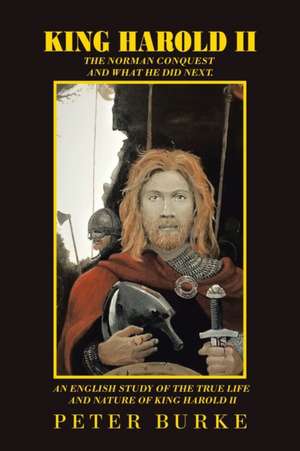King Harold Ii: The Norman Conquest and What He Did Next. an English Study of the True Life and Nature of King Harold Ii
Autor Peter Burkeen Limba Engleză Paperback – 28 feb 2021
Preț: 98.99 lei
Nou
Puncte Express: 148
Preț estimativ în valută:
18.94€ • 19.67$ • 15.80£
18.94€ • 19.67$ • 15.80£
Carte tipărită la comandă
Livrare economică 22 martie-05 aprilie
Preluare comenzi: 021 569.72.76
Specificații
ISBN-13: 9781665586344
ISBN-10: 1665586346
Pagini: 138
Dimensiuni: 152 x 229 x 8 mm
Greutate: 0.21 kg
Editura: Author Solutions Inc
ISBN-10: 1665586346
Pagini: 138
Dimensiuni: 152 x 229 x 8 mm
Greutate: 0.21 kg
Editura: Author Solutions Inc
Notă biografică
Peter Burke was, from 1962-79, one of the leading educational innovators in developing the inter-disciplinary School of European Studies at University of Sussex. He then moved to the University of Cambridge, where he now holds the title of Professor Emeritus of Cultural History and Fellow of Emmanuel College. He is celebrated world-wide as a historian both of the early modern era and as a writer and teacher who emphasizes the relevance of social and cultural history to modern issues. He is married to Brazilian historian Maria Lúcia Garcia Pallares-Burke.
